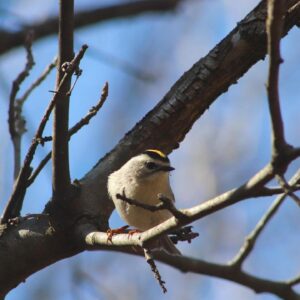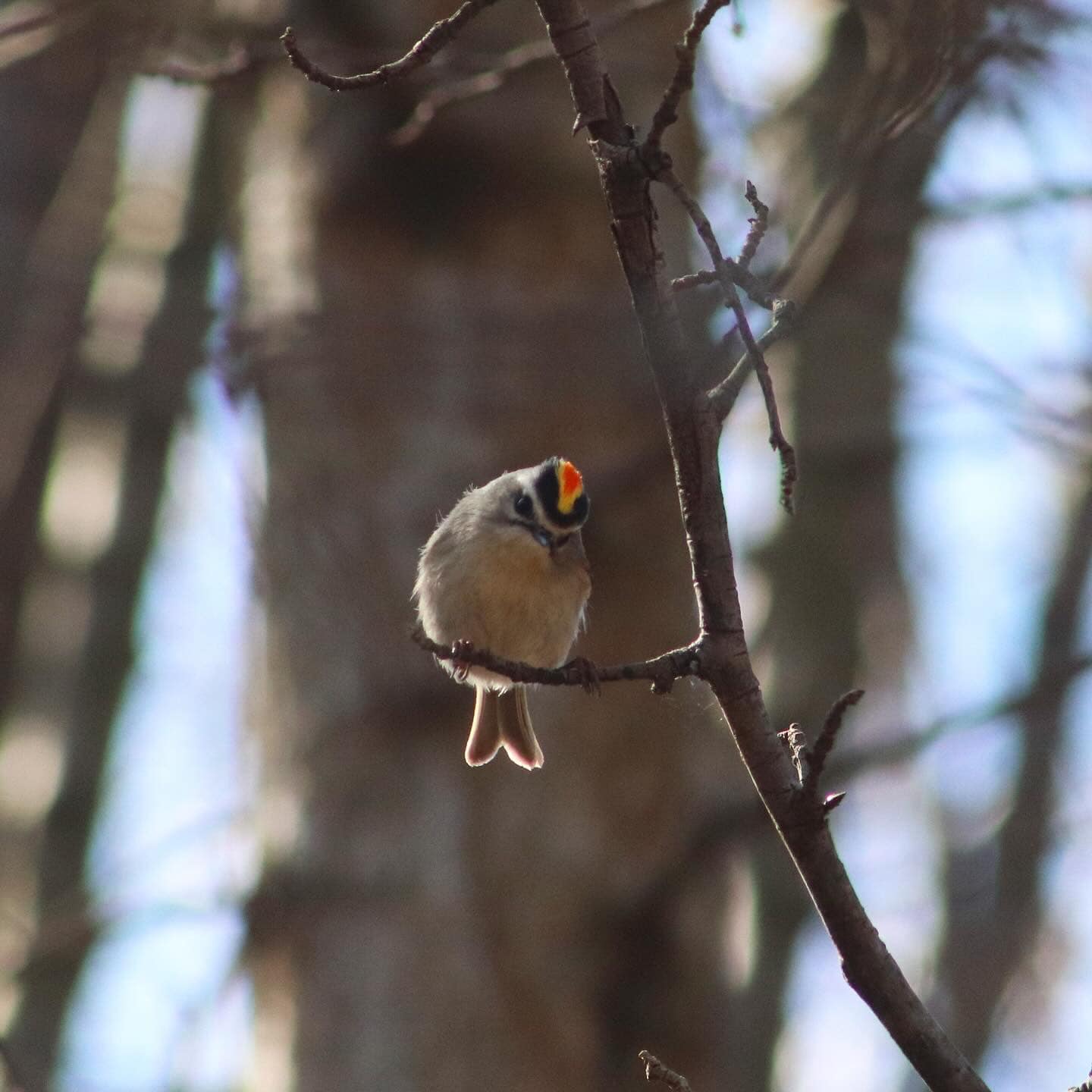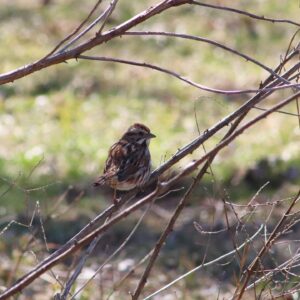by Jacob Crider
Out of all of the songbirds that migrate south to Kentucky, the smallest and arguably most hyperactive is the Golden-crowned Kinglet (Regulus satrapa). These colorful little birds arrive in our state around late September and stay until March. Confined to North America, Golden-crowned Kinglets breed in boreal forests of Canada, the mountains of the western U.S, the Great Lakes, and in the Appalachian Mountains. They can be found as far south as Guatemala.

In winter, they tend to reside in mixed and deciduous woodlands, sometimes joining mixed flocks of other songbirds. They are very tiny, mostly grayish with yellowish wings, white wing bars and a black cap and a yellow-gold crown. Males have a bold orange-gold coloration on their crown, while females are typically more of a light yellow. Their small black beak is used for hunting small invertebrates and eggs. They are almost entirely insectivorous and have a high metabolism where they must eat constantly throughout the day to survive, especially in frigid temperatures. They hunt in brush piles, shrubby areas, and underneath bark. They will also exhibit a behavior where they hover beneath the leaves of deciduous trees, or the needles of conifers, to catch small overwintering invertebrates, moreover, eggs of spiders and ticks!

Golden-crowned Kinglets use peculiar items in their nest construction. Moss, lichen, spider webs and insect cocoons are all items incorporated in their nests, usually built in a conifer. Their call is a very high-pitched series of chirps, similar to that of a Brown Creeper but in quicker bursts and less cricket-like.
At CMNP, these are fairly common winter songbirds in our woodlands. They can be seen throughout the preserve in areas with large trees, shrubs, and other areas to hunt for invertebrate prey. Listen for their high-pitched calls and flashy gold crown. They do not visit bird feeders but can be attracted to urban areas by planting native trees and plants.



